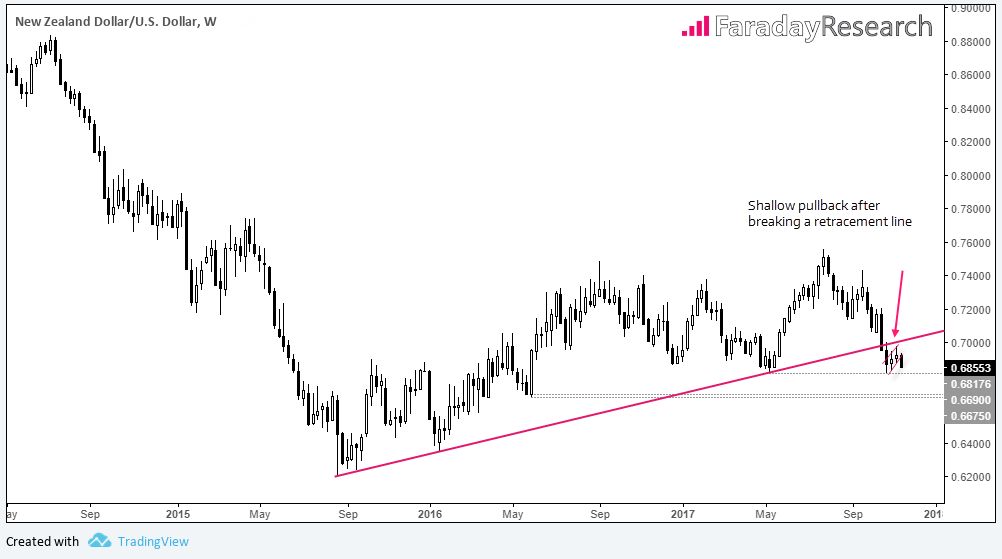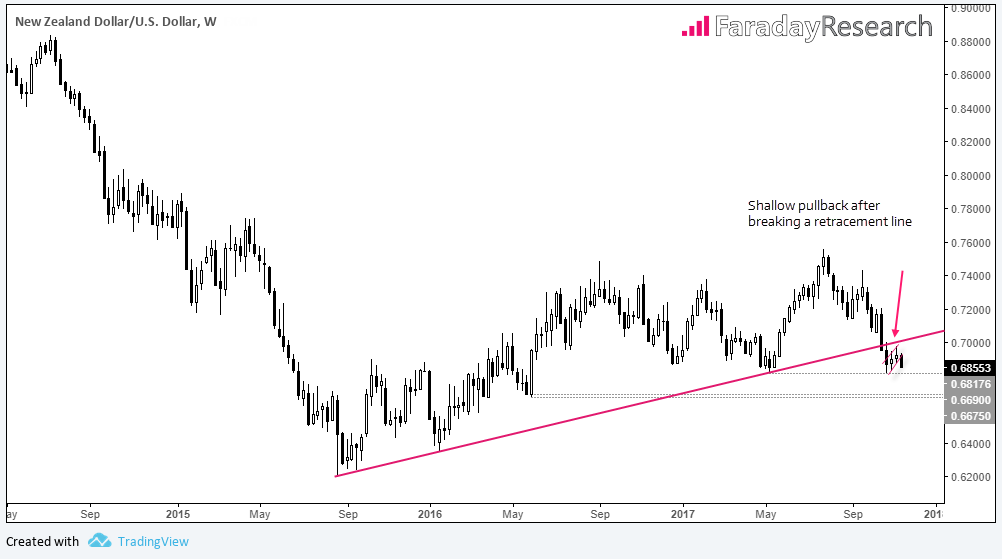The USD remains supported by expectations of a hike, slightly improved fundamentals and (admittedly debatable) hopes of tax reform. On the other side we have NZD, helped lower by a protectionist government and central bank which gleefully watches the currency go the right way for once. Put together we have a nice bearish trend on a currency cross which seemingly wants to break lower from here.
Starting with the bigger picture, price action on the weekly chart has essentially oscillated sideways since June 2016. Although at time of writing, NZD trades near the lower boundary of its range, having recently broken a retracement line and provided low volatility pullback.
And whilst it has traded higher from the 2015 low, the bullish momentum seen since that moment in time is pale in comparison to the bearish momentum during the bearish trend between July 2014 high to August 2015. This is an important point to consider, as it suggests the move from the 2015 low is corrective and that NZD could be on the verge of confirming a resumption of the longer-term bearish trend.
A break of 0.6817 (call it 0.6800) would be taken by some technicians as confirmation to the end of a long-term correction, and an assumption drawn that it will eventually break beneath the 2015 lows. For now, we’re keeping an eye on the range between 0.6700 and 0.6800 as it could provide bearish opportunities on the daily timeframe or lower.
The daily trend remains in a strong bearish trend which has so far provided three prominent swing lows. Furthermore, the bearish momentum really picked up during October as it headed towards 0.6800 support. Typically, we would expect to see momentum wane as it reaches a key level of support, so the characteristic of October’s move wold suggest bears appear keen to break to new lows. Furthermore, the strong bearish momentum coupled with a low volatility retracement could further tip the scales towards an eventual break lower.
That said, we have only seen this level tested twice since May, and a lower currency runs the risk of providing what RBNZ desire, which is higher inflation. In turn this could see further upwardly revised forecasts for inflation, which is code to markets for ‘potential hike’ and reason to buy NZD. Combine this scenario with a less-hawkish-than-hoped Fed, and we have a stronger case for a reversal higher. Until such a scenario arrives, we’ll await the technical to decide if or which direction we choose to trade.
From a tactical standpoint, we await a decisive break beneath May’s low before seeking bearish positions. If this were then to be coupled with a low volatility pullback or other signs of price compression, we’d be keen to explore bearish trades whilst beneath the original breakout level. If however, we are to see signs of exhaustion above or even slightly below 0.6800, we’d be concerned of being caught in a bear-trap and could await for momentum to better dictate out trading direction.


